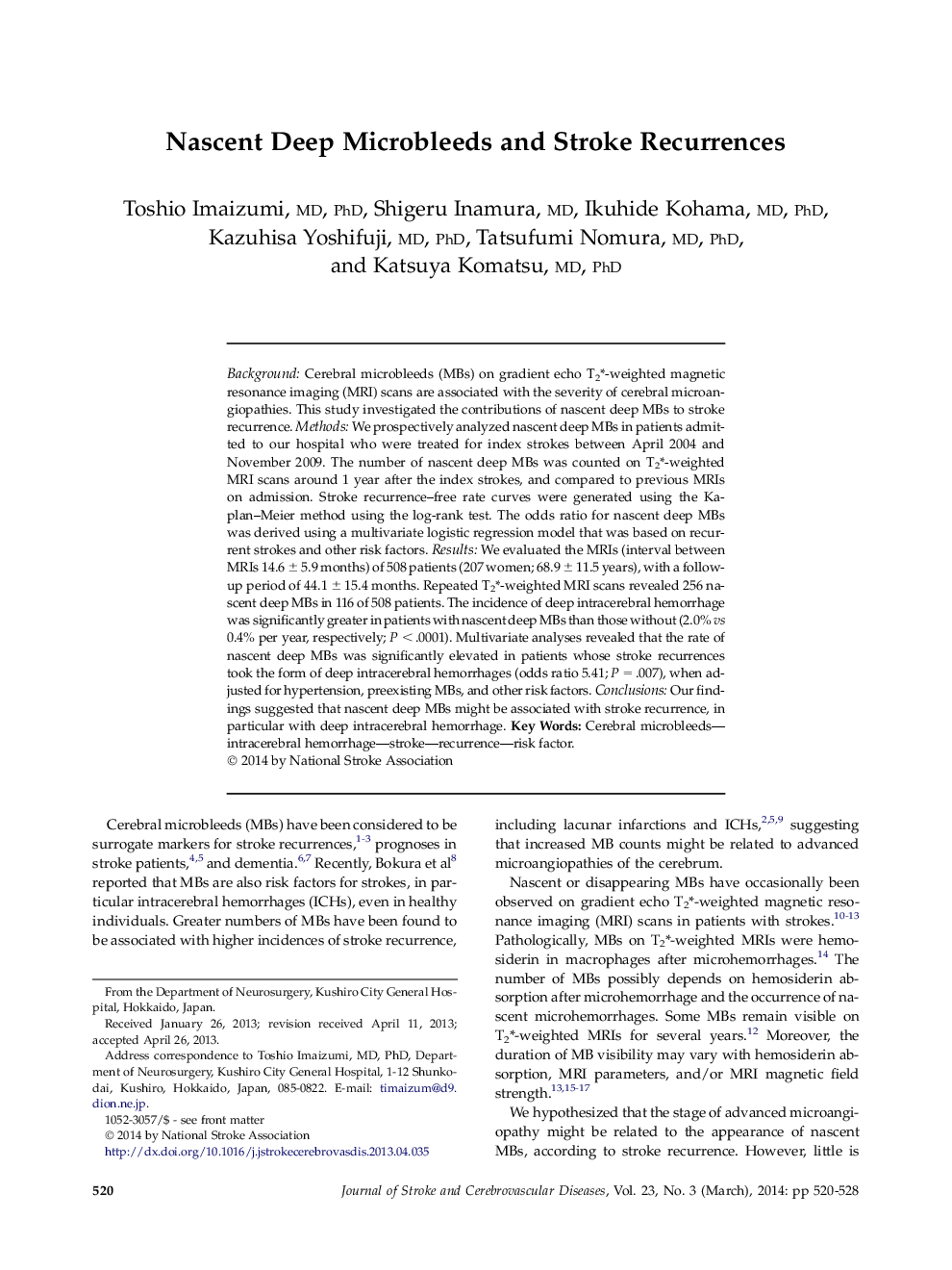| Article ID | Journal | Published Year | Pages | File Type |
|---|---|---|---|---|
| 2704168 | Journal of Stroke and Cerebrovascular Diseases | 2014 | 9 Pages |
BackgroundCerebral microbleeds (MBs) on gradient echo T2∗-weighted magnetic resonance imaging (MRI) scans are associated with the severity of cerebral microangiopathies. This study investigated the contributions of nascent deep MBs to stroke recurrence.MethodsWe prospectively analyzed nascent deep MBs in patients admitted to our hospital who were treated for index strokes between April 2004 and November 2009. The number of nascent deep MBs was counted on T2∗-weighted MRI scans around 1 year after the index strokes, and compared to previous MRIs on admission. Stroke recurrence–free rate curves were generated using the Kaplan–Meier method using the log-rank test. The odds ratio for nascent deep MBs was derived using a multivariate logistic regression model that was based on recurrent strokes and other risk factors.ResultsWe evaluated the MRIs (interval between MRIs 14.6 ± 5.9 months) of 508 patients (207 women; 68.9 ± 11.5 years), with a follow-up period of 44.1 ± 15.4 months. Repeated T2*-weighted MRI scans revealed 256 nascent deep MBs in 116 of 508 patients. The incidence of deep intracerebral hemorrhage was significantly greater in patients with nascent deep MBs than those without (2.0% vs 0.4% per year, respectively; P < .0001). Multivariate analyses revealed that the rate of nascent deep MBs was significantly elevated in patients whose stroke recurrences took the form of deep intracerebral hemorrhages (odds ratio 5.41; P = .007), when adjusted for hypertension, preexisting MBs, and other risk factors.ConclusionsOur findings suggested that nascent deep MBs might be associated with stroke recurrence, in particular with deep intracerebral hemorrhage.
